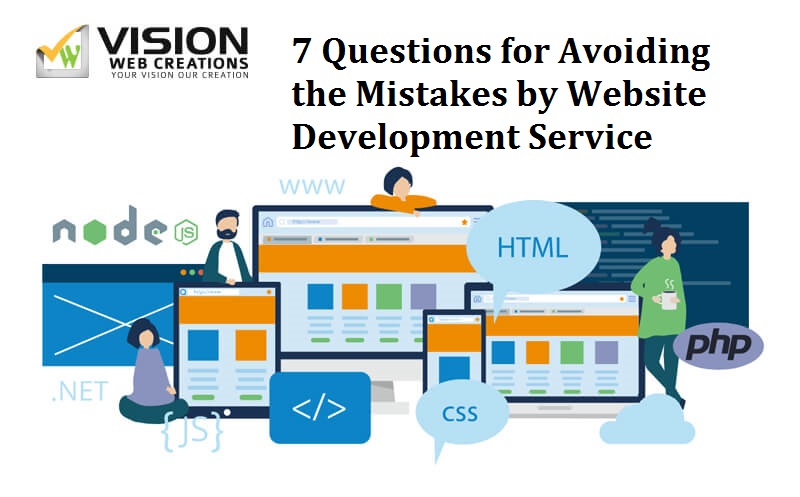Every day, we can see how technology is improving many aspects of our surroundings. The Internet of Things is rapidly growing, Artificial Intelligence is assuming control, internet-based solutions are becoming more sophisticated, and new technologies are being released at an unheard-of rate. Most routine jobs will soon be completed by a technical device or piece of software. Even while it can appear frightening at times, an optimist will realize that there will be an increase in the number of chances for the populace to take advantage of. More engineers, software developers, systems specialists, data gurus, tech leaders, and ideas for problem-solving will be required in the future.
To ensure that their children succeed in their careers, their interests, and their aspirations, parents and wise people should recognize the remarkable experiences that their children will have and take appropriate action as soon as possible. Given their eagerness and natural capacity to assimilate new ideas, teaching your children to programme when they are still young is one of the best moves you can do.
We believe the books discussed below will be of great use to you and your child if you decide to take this idea and apply it to your children who want to learn coding. Look through them and choose the one that best suits your child’s learning preferences and style.
Table of Contents
Coding Games in Scratch
The author, Dr. Jon Woodcock, began programming at the age of eight and has worked with a variety of systems, including single-chip microcontrollers and supercomputers of the highest caliber. He holds an Oxford University degree in physics and a University of London PhD in computational astrophysics. Woodcock, who started his adventure at a young age, shares everything in this resource to make it simpler for parents to guide their children through the technological maze.
Coding classes for kids teaches children useful skills for life after school in addition to being a highly sought-after ability in today’s digital world. This book teaches crucial techniques for problem-solving, project design, and idea communication while encouraging readers to make games they can play with their friends.
Children will like the step-by-step visual method that simplifies even the trickiest coding principles. By combining coding theory with the practical challenge of creating their own computer games, they will learn the principles of computer programming and how to code.
In order to ensure that aspiring programmers understand more than just how computer code operates, coding theory is taught through hands-on exercises.
Kids can develop single-player and multiplayer platform games, make puzzles and memory games, race through mazes, add animation, and more with Coding Games in Scratch. Additionally, it supports the maker movement and STEM education projects.
Children learn how to think creatively, collaborate, and reason rationally through computer coding, which is increasingly becoming a vital and in-demand ability. The DK computer code books for kids are the ideal initial resources for developing critical computer programming abilities since they are packed with enjoyable exercises and step-by-step instructions.
Coding for Kids
Adrienne Tacke, the book’s author, is a software engineer, author, and supporter of STEM education. She often speaks to children of all ages about the power of code as a volunteer for Code.org in Las Vegas, and she inspires young women and girls to choose a career in software engineering. Because she has experience and is aware of the boundless potential of the next generation of technologists, she has a heart committed to improving the world for them.
With 50 entertaining, engaging games, Coding for Youngsters gets kids off to a great start by teaching them the fundamentals of the Python programming language. Kids will advance via special lessons filled with useful examples as they make their way from understanding the fundamental building blocks of programming to making their very own games.
Children can learn to code (and debug it) step-by-step while watching the effects of their work in real time. Activities that combine several ideas at the end of each chapter help students test their new knowledge. After each chapter, there are more difficult challenges to complete for young programmers who really want to showcase their inventiveness. Kids only need a computer and this book to get started.
Python for Kids
You (and your parents) will be introduced to Python for Kids and the world of programming. As you play with original (and frequently humorous) example programmes that involve devouring monsters, secret agents, thieving ravens, and more, the ever-patient Jason R. Briggs will walk you through the fundamentals. The definition of new concepts, the colouring, analysis, and explanation of code, along with the humorous full-color graphics, lighten the mood.
Programming challenges that are meant to challenge your mind and deepen your understanding are included at the end of each chapter. By the time the book is finished, you will have created two entire games: a Pong-clone and “Mr. Stick Man Races for the Exit,” a platformer with animation, leaps, and other features.
Coding for Kids for Dummies
A STEM educator, author, and school administrator, Camille Moody McCue holds a PhD. She has observed that, just like reading, writing, and math, coding is swiftly elevating to the status of a crucial academic talent. This book is an ideal way for young learners ages 8-13 who want more coding knowledge than you can learn in an hour, a day, or a week.
This book explains the methods and reasoning required to write code, solve issues, and build entertaining projects using Scratch and JavaScript. It was written by a classroom instructor with considerable experience teaching technological skills to children as young as five. This second edition has been completely revised to include exclusively open-source programming languages.
This entertaining book makes learning to code enjoyable and simple, whether you’re a young person eager to create interesting things with technology or a parent, teacher, or mentor seeking to introduce coding to a young person.
With this practical resource, you and your children can learn the fundamentals of coding and make games and applications without any prior experience.
Coding for Kids (Age 9 to 15)
Bob Mather has been coding since he was 14 and has a lot of experience. He has finished a lot of his own programmes for enjoyment and has spent his career working at engineering software firms. The author, Bob, is aware of the tactic. He is aware that learning to code takes time, just like learning any other skill. Bob is aware that with any ability, the earlier you start, the better you grow. That is the driving force behind this tool. to equip the younger generation with the necessary capabilities for navigating the expanding digital economy.
This book begins with the absolute fundamentals: how to set up, install, and write your first lines of code.
Python in Easy Steps
Python in simple terms by Mike McGrath does not presuppose that you are already familiar with any programming languages. Due to this, this book is suitable for those who are new to computer programming. It features an approachable style that will appeal to programmers switching from another programming language, students learning Python at school or college, and people looking for a career in computing who need a fundamental grasp of computer programming.
The author, who acquired his in-depth understanding of computer languages while working as a developer on a contract basis for businesses all over the world, simplifies and makes fun of a complicated topic. Your children in middle school and above will gain a lot from this tool.
It starts by demonstrating how to set up the free Python interpreter so you can start writing executable programmes by copying the book’s examples right away. Before going on to give examples of Object Oriented Programming (OOP) and CGI scripting to handle web form data, it first shows all the fundamentals of the Python language. The last chapter of the book shows you how to leverage the skills you’ve learned to develop and implement graphical windowed apps.
Computer Coding with Javascript
With simple, step-by-step instructions and entertaining pixel art, Computer Coding with JavaScript explains how JavaScript functions and teaches students how to perform coding tasks. Additionally, readers learn how to make web sites, including interactive pages, as well as shapes, patterns, and simple animations. They are also exposed to HTML and CSS.
Learning code improves problem-solving and abstract thinking abilities, just as learning a language gives cognitive advantages. The book is a wonderful place to start for understanding computers and code, learning how to program, and practicing computer language because it breaks fundamental concepts down into simple to comprehend bits. includes instruction on using a Raspberry Pi computer as well as Python and Scratch coding.
Conclusion
We understand that learning a new skill, particularly a technical one like programming, may be intimidating, frightening, and difficult. Before they could reap the rewards of the sacrifices made to acquire such skills, many started but gave up. They include coming up with fresh ideas, figuring out unusual difficulties, improving business and industrial efficiency, and altering people’s lives, among many other things that make one feel good.




